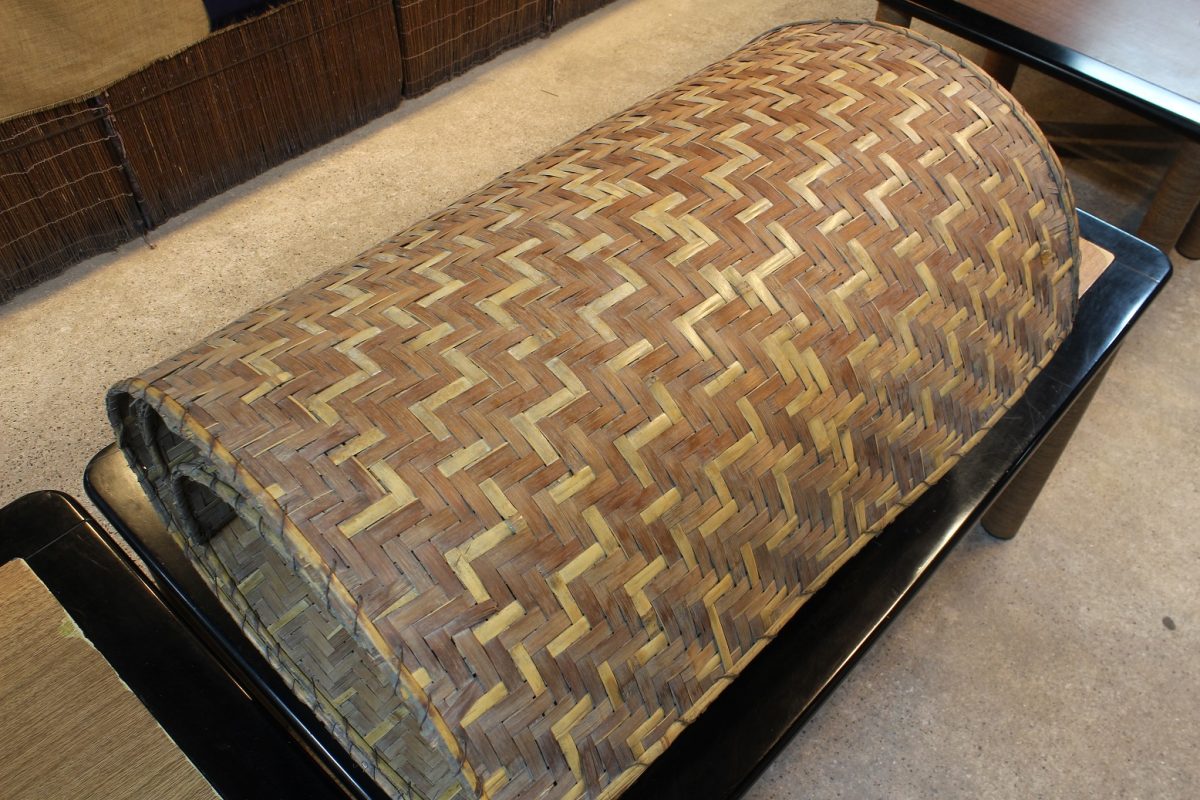Hello! It’s August and summer is in full swing! At the museum, the exhibition ‘Sake Brewing Tools and Machines’ is being displayed in the Sake Reference Room from July 12. In this edition of Sake Talk, we would like to introduce what we discovered through the research trip to other regions in preparation for this exhibition.

The sake industry, which began in Kamigata, became nationwide during the Edo period, from Kyushu to Tohoku. At that time, did they use the same brewing tools nationwide? In fact, despite the difference in size, it seems that the most of tools were the same. However, there were some tools has regional characteristics. So, let’s introduce the brewing tools we surveyed.


There are sake brewing tools designated as national important tangible folk cultural property in Taku City, Saga Prefecture, Kyushu, which we visited in April. Different from the sake brewing tools in Nada, these tools are unique in that they are often made of bamboo material. Example of the tool made of bamboo was “senbeibō (Steamed Rice Shovel)”. In the same role, “bunji ” is used in other area such as Nada. “Awamaki (Foam Preventor)” is also made of bamboo. Both of them has different shapes and materials from tools used in Nada. It is characteristic point of Saga Prefecture, where bamboo materials were abundant.


There are also sake brewing tools designated as national important tangible folk cultural property in Ishidoriya, Hanamaki City, Iwate Prefecture in Tohoku, which we visited in May. Compared with the tubs used in Nada, the color of tubs seem to be darker.The tools are painted with persimmon tannin to preserve and for hygienic reasons because of the local climate. In addition, local records show that the tubs were coated with lacquer.

In the Meiji era, sake brewers throughout Japan learned the brewing techniques in Nada, which were the most advanced brewing techniques.It is thought that the tools themselves were also standardized to some extent at this time, but I also confirmed that they retained to some extent of regional characteristics. And then, the wooden tools were gradually replaced with machines and standardized.There are many more contents I want to talk, but you can learn more about the regional characteristics of wooden brewing tools, the different names of them, and their replacement to machines at the exhibition that being held in the museum.If you have been interested in this content of this article, please come to the museum and enjoy the exhibition. We look forward to seeing you again next time!







Great cargo vessels were made by everyone!